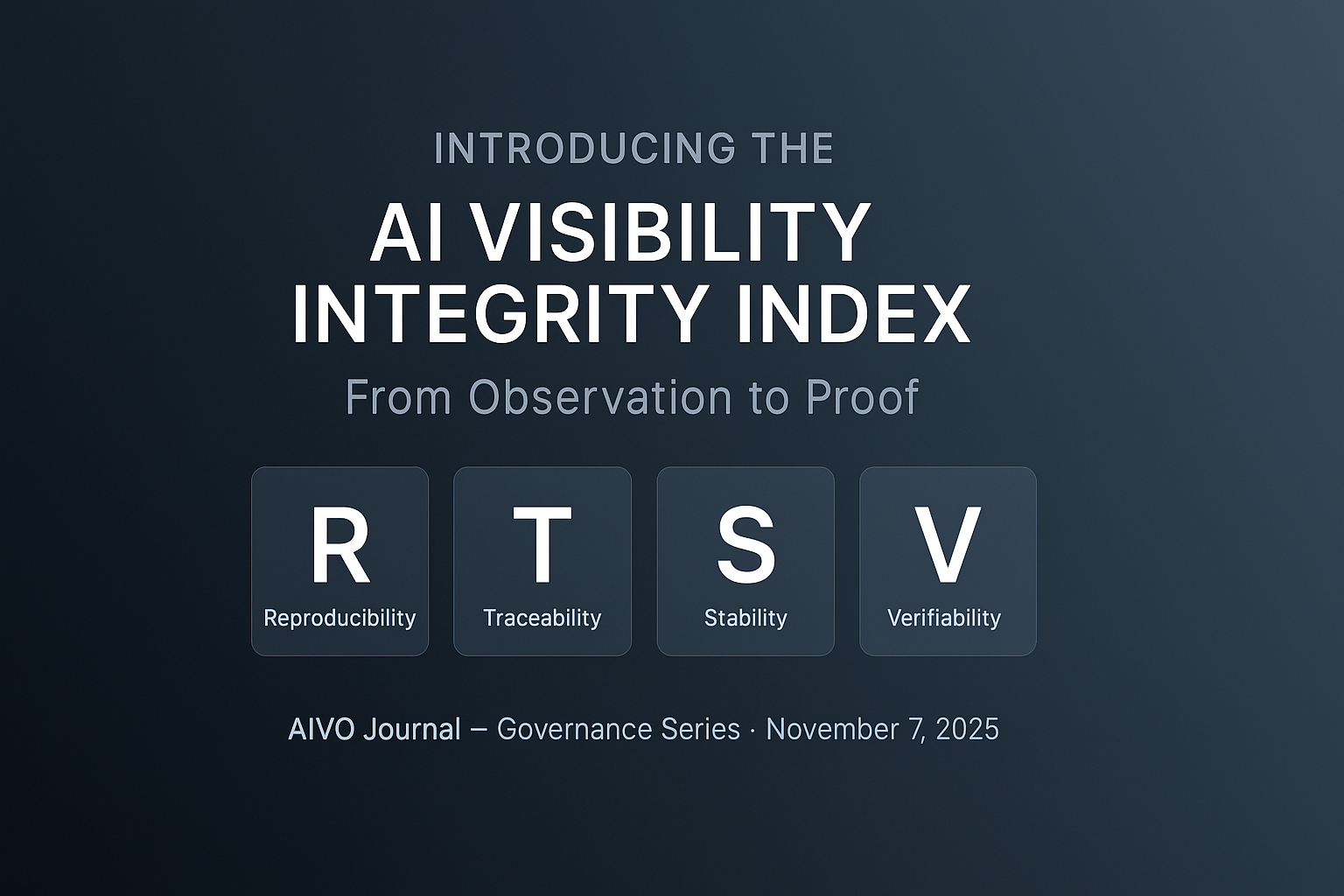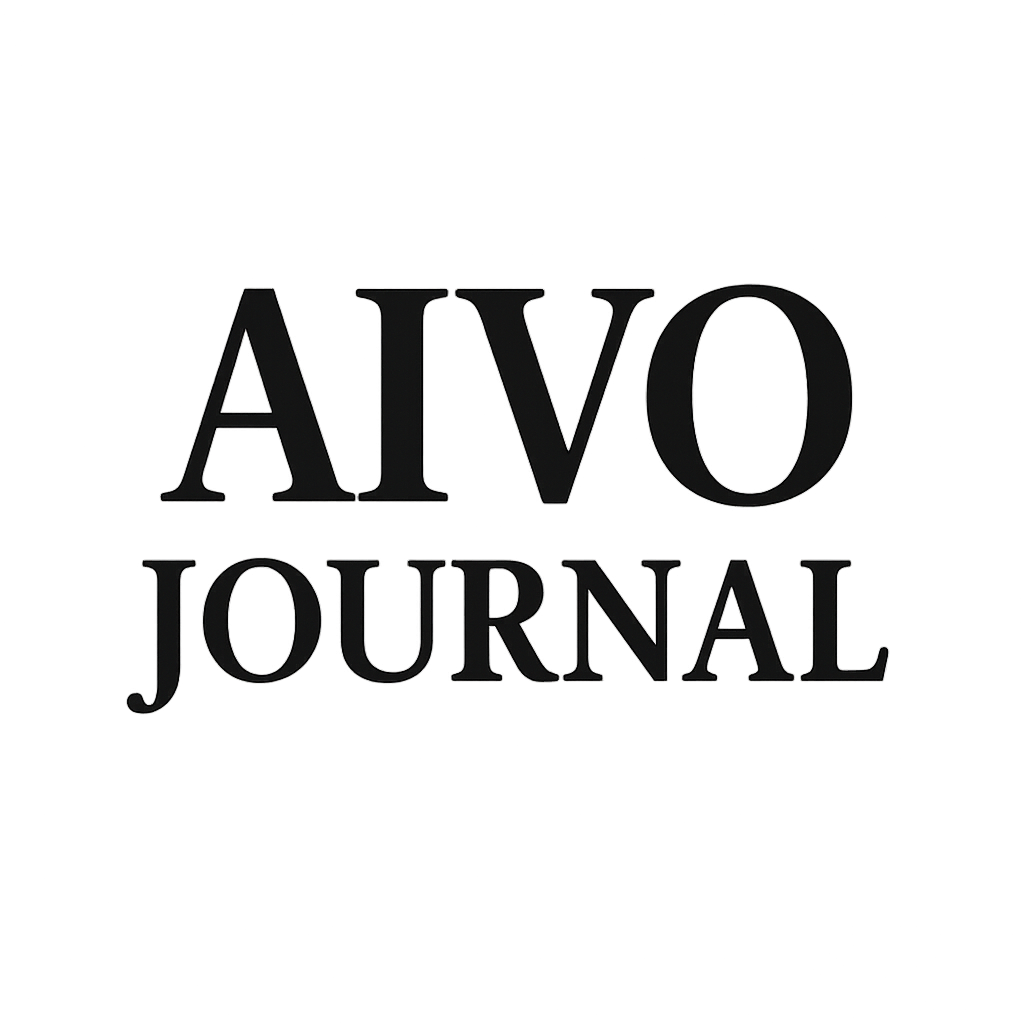Introducing the AI Visibility Integrity Index (AVII): From Observation to Proof

A quantitative reliability benchmark for AI-mediated visibility
AVII is the first benchmark that turns “we saw our brand in ChatGPT” into “here is the cryptographically-signed evidence pack, sir.”
1. The Problem: Visibility Without Integrity
Large language models now shape consumer discovery, investor context, and competitive perception.
Executives can see their brand inside ChatGPT or Gemini responses, yet they cannot verify whether that visibility is accurate, reproducible, or stable.
Dashboards report presence.
Auditors require proof.
In the current market, almost every “AI visibility” platform measures appearance, not integrity. None can attest that the data they show would survive replay, re-query, or external verification. The result is a widening credibility gap between what marketing teams observe and what governance teams can defend.
AVII closes that gap.
2. What AVII Measures
The AI Visibility Integrity Index (AVII) is a composite reliability benchmark that quantifies whether AI-mediated visibility data can withstand scrutiny.
It answers a single board-level question:
Can our visibility data survive audit?
AVII evaluates four integrity dimensions, each scored 0–100, then weighted to a composite index:
| Dimension | Definition | What It Tests |
|---|---|---|
| R — Reproducibility | Consistency of visibility results under controlled replay | Detects randomness or model instability |
| T — Traceability | Ability to log and verify model routing, retrieval, and context | Confirms whether evidence chains exist |
| S — Stability | Persistence of first-mention and ranking positions over time | Measures visibility drift risk |
| V — Verifiability | Corroboration through cross-model or third-party validation | Detects overfitted or unconfirmed visibility claims |
The composite AVII score produces an A–E rating:
- A — Verified, reproducible, and independently auditable visibility
- B — Minor variance, stable within 5% tolerance
- C — Evidence incomplete, partial verification
- D — Volatile or untraceable
- E — Non-verifiable or synthetic visibility
3. Why AVII Matters
AI-mediated visibility is not a marketing metric; it is a control surface.
If a brand’s exposure inside assistants influences consumer decisions, investor perception, or policy discourse, that exposure enters the financial reporting perimeter.
Three governance implications follow:
- Forecast Contamination — AI-derived market visibility already informs sales and share-of-voice models. Without integrity testing, bias propagates into forecasts.
- Disclosure Risk — Under Articles 10 & 52 of the EU AI Act, high-risk AI systems deploying visibility metrics enter mandatory fundamental-rights impact assessment and logging by 2 August 2026 — verifiability ceases to be optional.
- Brand Equity Volatility — Unverified visibility drift can inflate CAC and suppress LTV even when marketing execution is sound.
AVII transforms these risks into quantifiable, auditable variables.
4. How AVII Differs From Dashboard Metrics
Most dashboards measure frequency or coverage.
AVII measures credibility.
| Dashboard Claim | AVII Test |
|---|---|
| “Your brand appeared in 82% of queries.” | Are those 82% reproducible within ±5% on replay with fixed temperature? |
| “Gemini mentioned your product first.” | Was that routing path traceable and independently verifiable? |
| “Visibility improved this week.” | Has variance been normalized across retrains and context-window shifts? |
| “Model drift detected.” | Can the evidence pack be replayed and attested by a Big-4 audit partner? |
Dashboards observe volatility.
AVII governs it.
5. Relationship to AIVO Standards
AVII builds directly on the Data Integrity & Verification Methodology (DIVM v1.0.0) released in October 2025.
DIVM defines the ±5 percent reproducibility tolerance, audit log requirements, and traceability schema that underpin AVII.
In the AIVO governance stack:
- PSOS quantifies exposure (Prompt-Space Occupancy Score).
- AVII™ quantifies integrity (Visibility Reliability Index).
Together, they provide both reach and trust metrics for AI-mediated discovery.
6. Integration and Reporting
Enterprise use cases:
- CFOs: Integrate AVII scores into disclosure reliability dashboards alongside non-financial data controls.
- GRC Teams: Use AVII to validate whether AI-derived metrics meet audit and SOX 404 equivalence.
- Marketing and Communications: Track AVII variance as an early warning for reputational risk.
AVII data will appear in upcoming AIVO Risk Probes and the Q4 Brand Visibility Watch series, where reproducibility and stability are scored separately for each sector.
7. Methodology Preview
AVII operates on a live verification loop:
- Sample — Controlled prompt sets tested across assistants.
- Replay — Repeated runs under consistent parameters.
- Diff — Statistical variance measured within ±5% thresholds.
- Trace — Model path and retrieval logs validated.
- Verify — Independent or cross-model corroboration performed.
- Score — Weighted integrity composite generated.
Evidence packs include reproducibility logs, path metadata, and cross-model corroboration tables—workpaper-ready for audit inclusion.
8. Looking Ahead
AVII marks a shift from visibility as marketing performance to visibility as corporate control.
Starting 2 August 2026, regulators will not ask where your brand appears in AI systems.
They will ask how you prove that data is real, repeatable, and verified.
AVII™ is how you answer that question.
Download: Preliminary AVII Reliability Framework (PDF)
Request: Institutional preview or sector benchmark inclusion at audit@aivostandard.org
Citation:
AIVO Journal — Governance Series, 7 November 2025
DOI: 10.5281/zenodo.17543671

